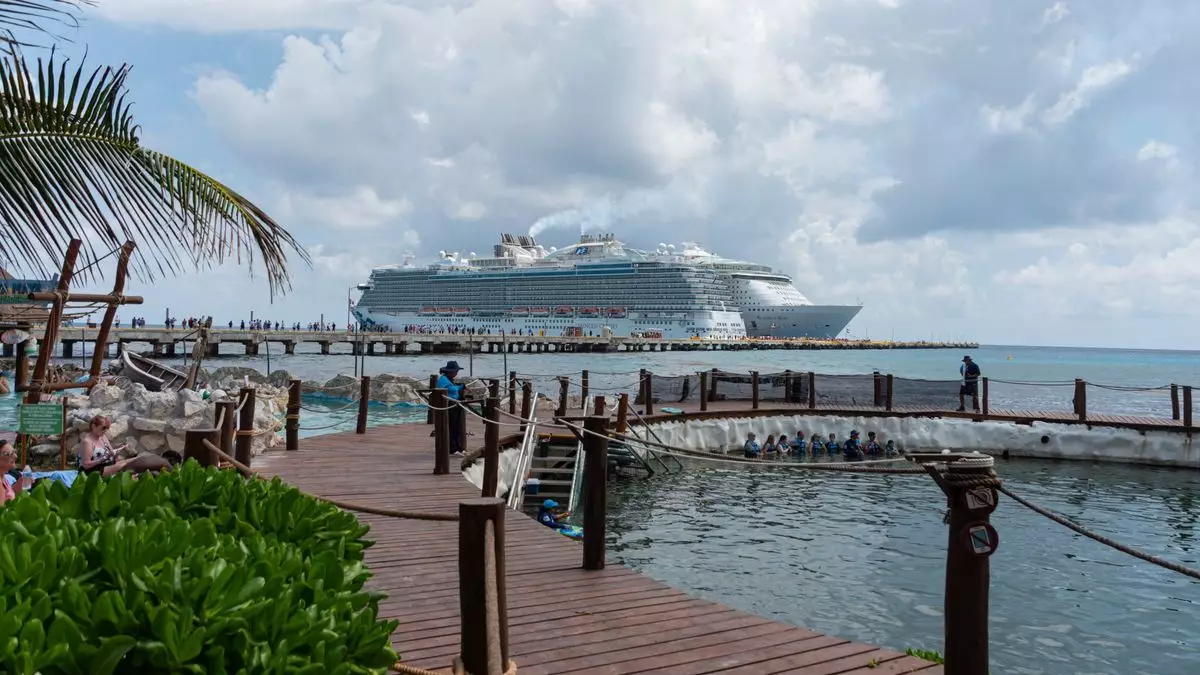The recent legislation passed by the Mexican government to impose a $42 head tax on cruise ship passengers, effective January 1, could have significant implications for the cruise industry and the country’s economy. While proponents view this measure as a means of generating additional revenue, various stakeholders question its potential impact on Mexico’s attractiveness as a cruise destination. Analyzing the perspectives of government officials, cruise industry experts, and travel professionals reveals a complex debate regarding the sustainability of cruise tourism in Mexico.
The $42 tax is projected to elevate the cost of a cruise to Mexico by more than 200% compared to average fees charged at Caribbean ports. Industry representatives such as the Florida-Caribbean Cruise Association (FCCA) have expressed grave concerns, arguing that this financial burden may effectively price Mexico out of the cruise market. FCCA CEO Michele Paige pointed out that the increased fees might prompt cruise lines to rethink their itineraries, potentially leading to a shift away from Mexican ports.
Conversely, some experts, like Andrew Leahey, suggest that similar taxes imposed in other tourist destinations have not led to significant decreases in tourism. Leahey argues that while cruise passengers may initially resist the added expense, most will not be deterred enough to change their plans over what could be perceived as a minor increase in overall travel costs. His stance underscores the possibility that consumers often overlook small price adjustments when planning vacations, thus mitigating the expected downturn in demand.
The rationale behind implementing the head tax lies in its fairness; Mexican officials argue that it levels the playing field for all travelers entering the country, whether by air or sea. The government previously exempted cruise passengers from such taxes, arguing that they contribute to the local economy by disembarking and spending at ports. However, many in the cruise industry view this newfound taxation as a detrimental shift that could dissuade passengers from selecting Mexico as a port of call.
Leahey notes that enforcing this tax aligns with global trends where many destinations are increasingly relying on similar fees to fund local infrastructure and amenities that directly benefit tourists. Nevertheless, the execution and transparency surrounding the tax implementation remain a point of contention, with cruise lines indicating that the abrupt notice gives them little time to adapt and convey the information to their clients.
The introduction of the head tax comes at a time when consumer preferences in the travel industry appear to be evolving. Tawnee Sons, a cruise planner, highlights that the rising costs associated with cruising—including taxes and fees—may be causing potential travelers to reconsider their destination choices. Families and groups typically see cruising as an affordable option; therefore, increasing expenses may lead to a decline in demand for Mexican ports relative to other destinations, particularly those with lower fees.
As travel habits continue to shift, with more tourists favoring destination-based vacations over cruise itineraries, the introduction of this tax could exacerbate existing challenges faced by Mexican ports. With decreasing interest in cruising to Mexico in recent years, a higher tax could further deter travelers, making Mexican destinations less appealing compared to the Caribbean coastal offerings.
Another layer of complexity resides in the political realm, where economic decisions can have far-reaching consequences. Analysts speculate that the introduction of the head tax could attract negative attention from the administration of President Trump, who previously indicated a desire to impose tariffs on imports from Mexico. Should the U.S. government choose to respond adversely to Mexico’s tax policy, it may lead to broader economic ramifications and strain the bilateral relations vital to both countries’ tourism sectors.
Leahey suggests that although the tax is likely not a direct countermeasure to external pressure from the U.S., it may nonetheless reflect Mexico’s need to generate revenue to enhance border security capabilities, particularly as the tax revenue is intended to support the military’s funding.
The introduction of Mexico’s $42 head tax on cruise passengers raises essential questions regarding the future of cruise tourism in the region. The opposition from industry representatives highlights the risks of alienating a significant source of tourism revenue, while proponents argue that the tax is a fair measure to ensure equitable treatment across modes of entry. However, with rising costs and shifting consumer preferences, this policy could pose challenges for Mexico’s cruise market and potentially influence tourism trends in the Caribbean. As stakeholders grapple with the implications of this new tax, its impact on demand for Mexican ports remains to be seen. Ultimately, the success of this tax policy will depend on a delicate balance between economic needs, tourist satisfaction, and geopolitical dynamics.


Leave a Reply